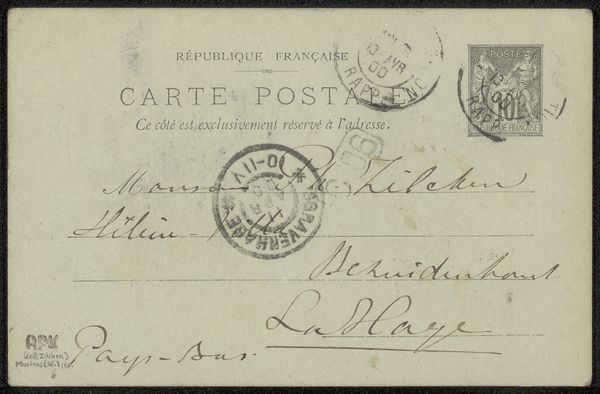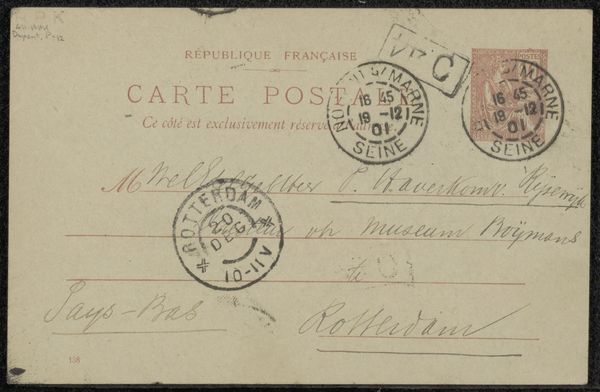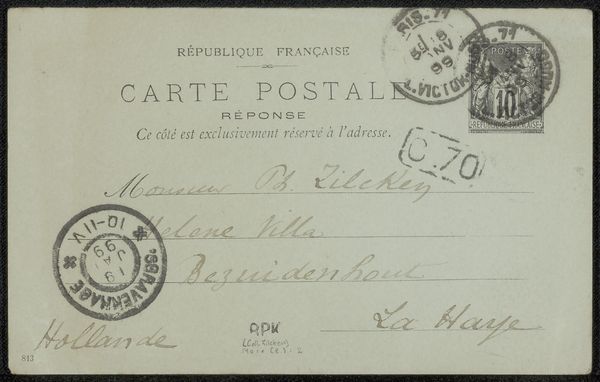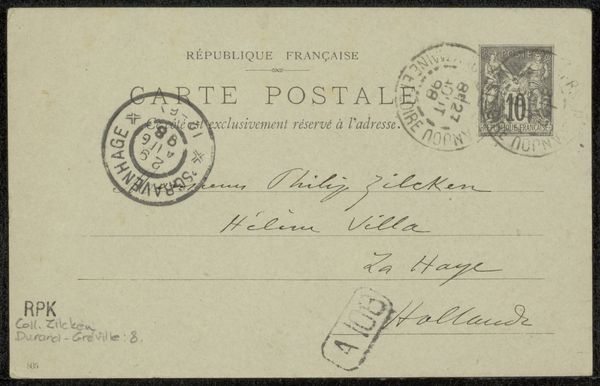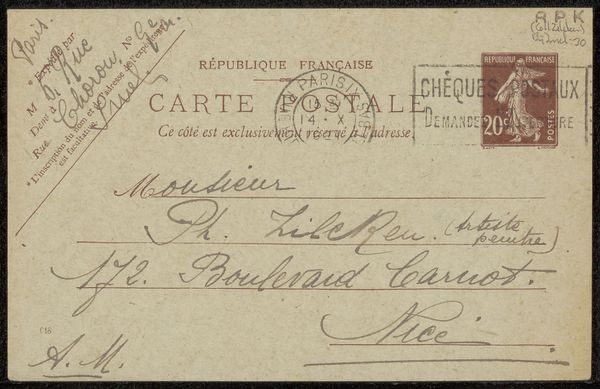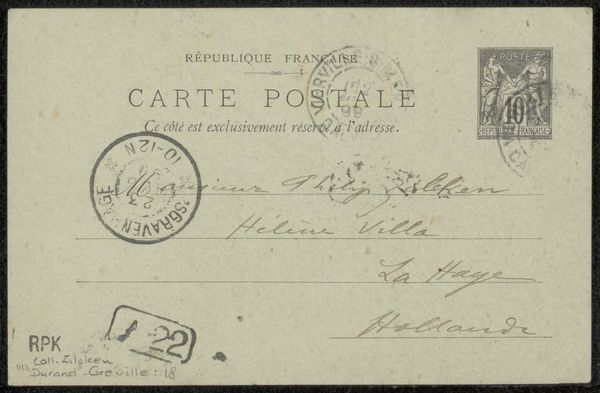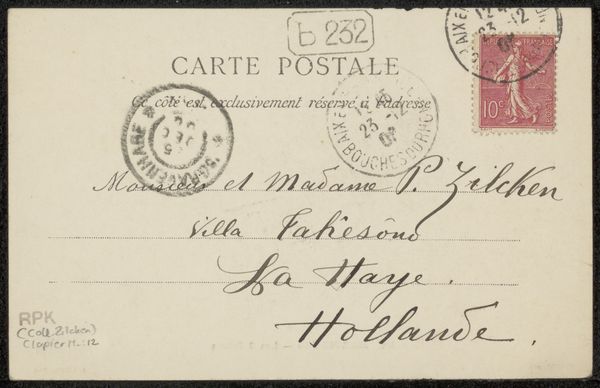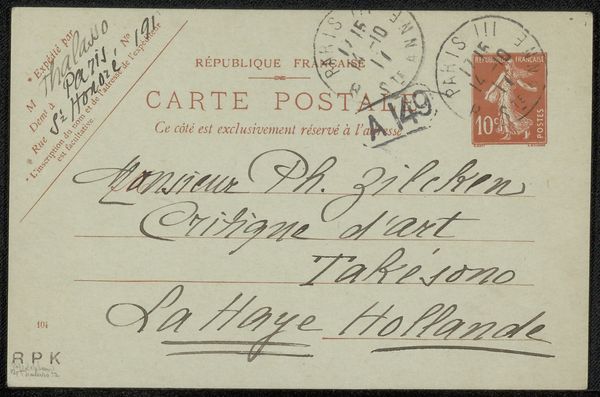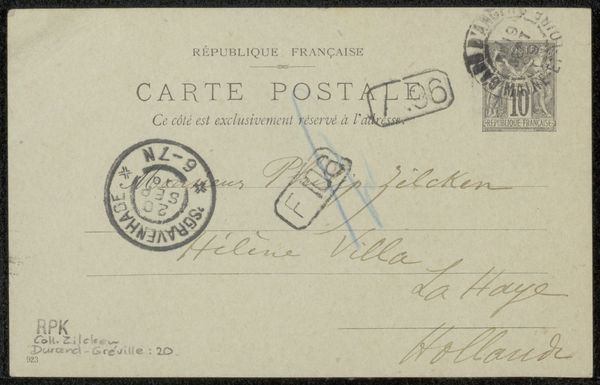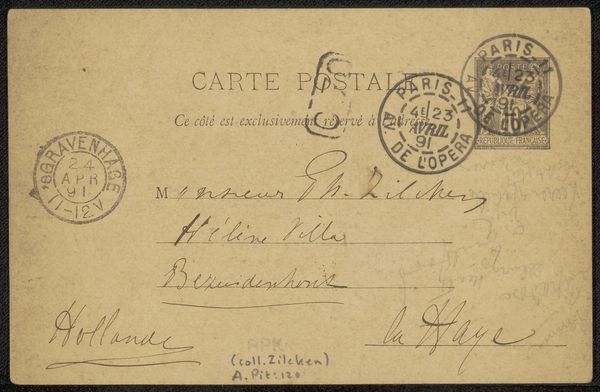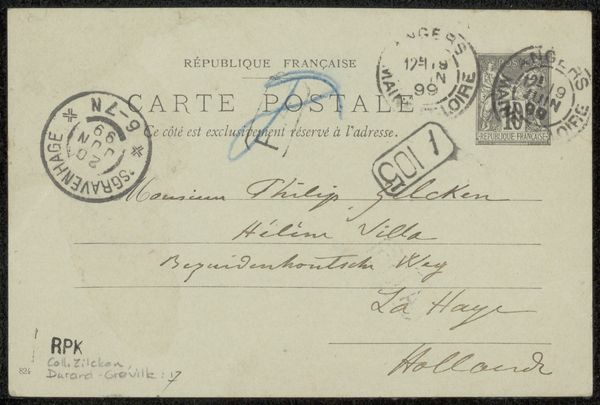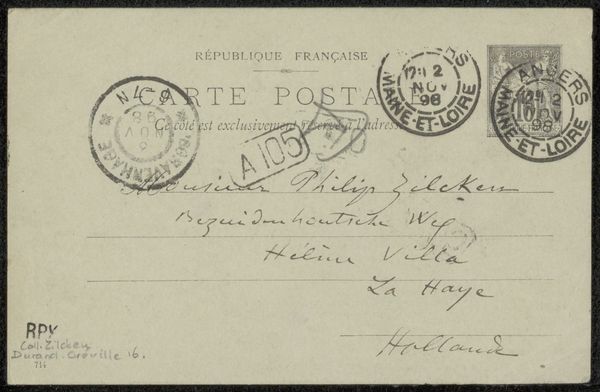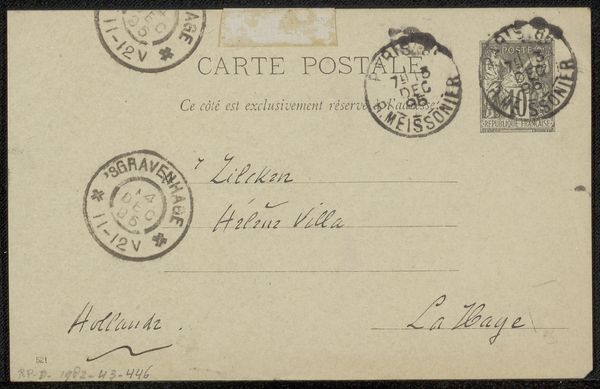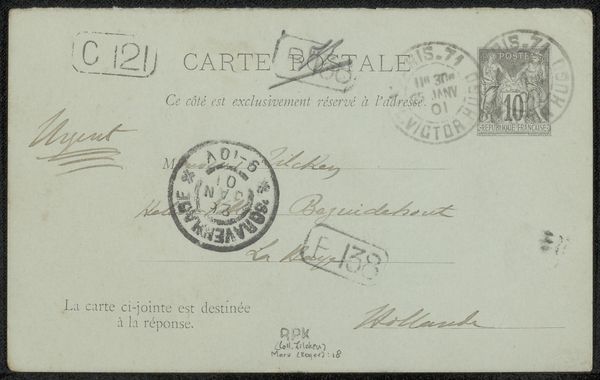
mixed-media, print, photography
#
mixed-media
# print
#
photography
#
calligraphy
Copyright: Rijks Museum: Open Domain
Editor: This is a postcard titled "Briefkaart aan Philip Zilcken" by Émile Durand-Gréville, likely from 1898-1899. It looks like mixed-media, combining photography and calligraphy. It feels fragile, like a little piece of history. What stands out to you about it? Curator: Well, beyond its visual simplicity, I am drawn to this postcard as an artifact embedded in a specific historical context. Think about the act of corresponding in the late 19th century – a much different experience than our instantaneous digital communication. This card represents a physical connection, and when we think about who Philip Zilcken was, it is a look into the late 19th-century art world. Editor: Interesting! So the recipient is important here too? Curator: Absolutely. The handwritten address and stamps tell a story of movement and connection across geographical boundaries. Think about the rise of the postal system in relation to expanding colonial networks, industrialization, and shifting social landscapes. Where does this small act of communication fit in these large themes? Editor: I hadn't thought about that. So, it’s not just the image itself, but what the postcard *represents* in its time? How it helped connect people and ideas. Curator: Precisely. Each element—the choice of photography combined with calligraphic text, the postal markings, and the address itself—speaks to the complex web of social and political structures at play. This wasn't merely a neutral object; it actively participated in constructing and maintaining relationships within a very specific cultural moment. What have you gained reflecting on it? Editor: I now view the postcard as more than a quick message; it's a small document of a particular time and place. Thank you! Curator: Indeed, understanding art requires that we investigate these critical intersections of object, culture, and history. Thank you.
Comments
No comments
Be the first to comment and join the conversation on the ultimate creative platform.
